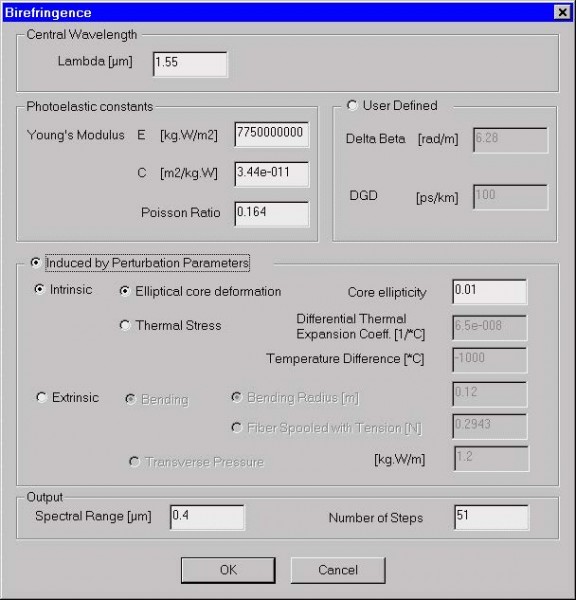Click the “Birefringence” icon in the “Navigator” pane. The “Birefringence” dialog box
appears.
| Step | Action |
| 1 | In the “Birefringence” dialog box, check the “Induced by Perturbation Parameters” option. The “Photoelastic Constants” entries become available. |
| 2 | In the “Photoelastic Constants” section, enter: Young Modulus 7750000000, C 3.44e-011, Poisson Ratio 0.164. |
| 3 | In the “Induced by Perturbation” Parameters section, check “Extrinsic”, “Bending”, and “Fiber Spooled With Tension”. |
| 4 | Enter the “Bending” value 0.12 |
| 5 | Enter the “Fiber Spooled with Tension” value 0.5. |
| 6 | In the “Output” section, enter “Spectral Range” 0.4 and “Number of Steps” 51. |
| 7 | Press OK to close the “Birefringence” dialog box |
| 8 | Go to the “Birefringence” view tab. The birefringence and Differential Group Delay (DGD) vs. wavelength are plotted there. |
Your “Birefringence” view tab should look like this:
The results can now verified by selecting the “Birefringence” tab on the “Views”
window:



